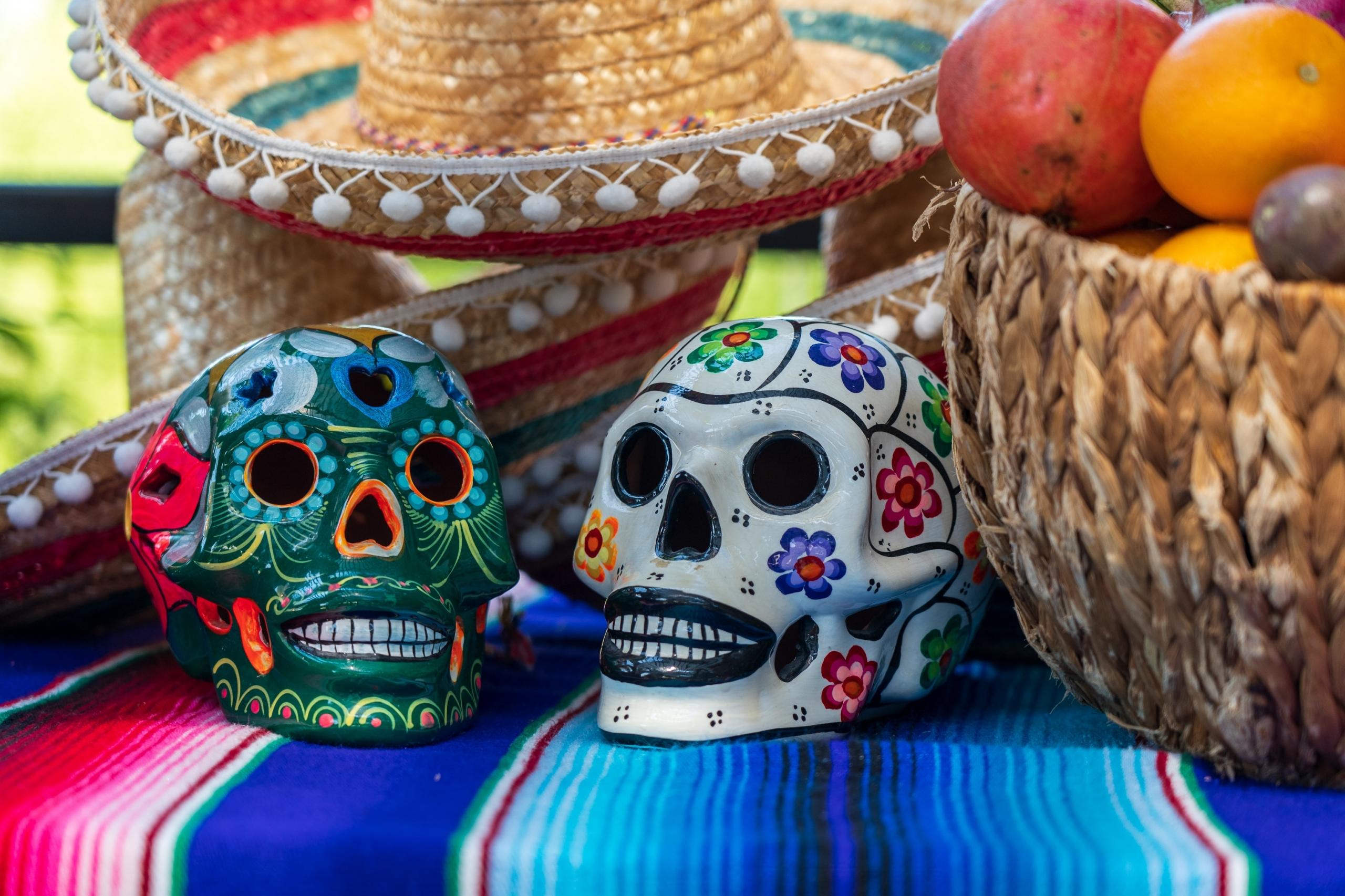When you decide to learn Spanish as a second language, you are setting yourself on a path to being able to communicate with around 440 million Spanish speakers. When you travel abroad to one of the 20 countries where people speak Spanish, you'll be able to hold a conversation with the locals which will really impress them.
Learning a language entails mastering verb conjugation and other grammar aspects. You must develop a level of vocabulary to use words and phrases in different contexts, formal and informal. Expressing what you want to say isn't enough. You must also be able to respond to what others say to you.
Spanish has obvious appeal because it's the world's second most spoken language by number of native speakers. What's more, this language and Spanish-speaking nations' cultures are rich and diverse. And did you know that some English words routinely used come from the Spanish language? Those include:
- ranch (rancho)
- patio
- stampede (estampida)
- cockroach (cucaracha)
- tornado
- breeze (brisa)
Words like Taco and Quesadilla are Spanish, of course. But limiting our Spanish vocabulary to menu items (and other stereotypes) severely limits how far learning this language can take you. Speaking Spanish will open many doors, but how should you go about studying it?
You can sign up for traditional language courses and private classes with a tutor, but you have other ways to learn the language of Cervantes. Superprof has put together this handy guide about some of the different options available for people who want to learn Spanish.

How to Speak Spanish: Getting Started

Learning a foreign language is a big deal for lots of reasons. But when it comes to learning Spanish, there is no need to panic or worry! English and Spanish have lots in common, which makes the language-learning experience easier.
Both languages use the same alphabet; that's one of the most obvious similarities. But Spanish uses diacritical marks to change letters' sounds and indicate syllable stress.
Overall, syllable stress in Spanish is much easier to master than in English. For instance, we don't know what 'export' means unless we hear it. If the first syllable is stressed, it's a noun but if the last syllable gets the stress, it becomes a verb. You can see how that would confuse speakers of other languages who study English.
You'll have no such trouble in Spanish. The penultimate syllable receives the stress unless marked with an accent. Your new language also removes ambiguity over how to pronounce the letter N. Consider 'sign' and 'champagne', for instance.
Both feature the 'gn' letter combination but only one of them sounds like the Spanish 'ñ'. You won't have to guess when to pronounce the Spanish N that way; the diacritical mark makes it clear. Woe should you forget to pronounce it properly! The name Castañeda means something quite different if you pronounce it with a standard n-sound.
Like so many other languages including English, Spanish follows the subject-verb-object format but you won't invert the subject and verb to form questions. Instead, the raised end syllable tone signals a question, as the presenter demonstrates in this video clip. This lilt is much more pronounced in Spanish than in English.
Verb conjugation presents a real challenge. The Spanish language counts more than 250 irregular verbs, each with moods, aspects and tenses. Indeed, you'll find up to 50 different conjugations for a single verb. So while English learners wrestle with how to conjugate 'to be' - English's most frequently used irregular verb, Spanish learners must contend with about 1/3 of Spanish verbs' irregular conjugation.
But you have no need to fret. You can access tips for beginners learning Spanish online. And then, you are set to begin your Spanish learning adventure. Who knows where it might take you - Spain, Mexico, Argentina, or even Colombia.
If you want to start by taking private Spanish classes from home, doing so is an effective way to progress. You can begin your learning journey in familiar surroundings rather than in an immersion program. Such linguistic stays emphasise language fluency, oral expression and comprehension.
But your Spanish lessons at home will help you nail your new language's grammar and syntax. You'll also master the rules of phonetics and pronunciation, as well as writing in Spanish. Writing is often an overlooked skill in language learning, even in immersion programs.
Find effective Spanish classes Melbourne here on Superprof.
An Easy Way to Learn Spanish
As a beginner, you might start with numbers and counting. For instance, count how many strokes it takes to brush your teeth or how many steps to the nearest shop in Spanish. Follow these number exercises by asking questions. Simple ones at first, and then building more complex queries.
Approach verb conjugation gingerly, lest the prospect of it overwhelm you. Start with simple verbs and simple tenses, and learn how to negate. For instance, 'Don't you like...?' becomes '¿No te gusta...?'. In Spanish, you only need to preface the standard sentence with 'No' to negate.
With these basic steps, you will soon be able to engage in simple conversations in Spanish. This early confidence should be a great help as you kick on further into your Spanish learning.
You might remember French or German classes at school if you took them. Starting to learn a new language usually involves introducing yourself and sharing a few details about your life. You might say where you are from and where you live, for example.
Therefore, by starting with numbers, verb conjugation, and questions you will have the necessary tools to tackle these first steps.
Best Ways to Learn Spanish Online
Learning Spanish Online is an increasingly popular option. As you can see from the video clip above, language learning concerns wasted no time setting up channels for independent learners to study Spanish on their own.
In more general terms, people start by asking their web browser about "Free Spanish Online", "Online Course", and "Online Spanish Course". These searchers might not know what they are looking for or what sites can actually help them. Still, querying your favourite search engine is a good place to start but you have to be a little careful combing through those results.
You will find that some websites charge for their content without fully disclosing what you'll get for your money. You might have to dig a little bit further to find sites that offer free Spanish resources. To save you a bit of time, Superprof rounded up a few free learning platforms:
- Spanish Easy
- Voc Box
- Loecsen
- Lengalia
- Gateway
Note that these are all online platforms which may or may not offer an app for on-the-go learning. We'll talk about language learning apps you can download to your phone or tablet in the next segment.
You can also search your favourite platform for videos that offer free Spanish content, like the YouTube video at the top of this segment. Such videos typically offer bitesize instruction on specific topics, so you can search for subjects that you need extra help with.
All these free resources will boost your Spanish learning efforts. Your searches will yield tools to master Spanish grammar and exercises to speak Spanish. Spanish vocabulary is offered on many different websites and available for you to learn by heart. With online tutelage, you'll soon perfect your oral expression will be within easy reach.
Online Spanish learning is a good start to your language learning journey. It can help you decide if Spanish is the right language for you. If so, you can get your conversational Spanish skills up to snuff before undertaking an immersion trip in the Spanish-speaking world. There, you can perfect your Spanish grammar, pronunciation and accent.
Find a convenient Spanish class Brisbane here on Superprof!

The final tip for this segment: be sure to use an English-Spanish online dictionary if you are ever in any doubt. By looking up a word on a website such as Word Reference and writing it down, you are far more likely to remember it than if you don't write it down. You may even build mind maps to help you keep track of all your new vocabulary and verb tenses.
What Apps Can You Use to Progress in Spanish on Your Smartphone or Tablet?
These days, it seems we're always reaching for our devices, and for good reason. We hold a world of information in the palm of our hands; who could resist that kind of power?
Let's pick up where we left off in the previous segment. Wading further into the digital world, we find loads of apps to learn Spanish available for download onto smartphones and tablets.

For most people, a language study trip to Buenos Aires, Santiago de Chile, or Barcelona is unfeasible, especially in these economically fraught times. You can always look to cheaper and more convenient ways to learn Spanish without uprooting your whole life (but definitely costing you an adventure!).
To help you manage your disappointment, let's talk about different applications to study Spanish. Apps have the advantage of motivating, enthralling and captivating their audience. Some are designed for adults and others are for young learners. But the common philosophy is that learning the Spanish language should be engaging and fun to ensure quick progress.
Two applications that make full use of that idea stand out. You could hardly miss Duolingo, the app Apple voted Best Learning App in 2013. Duolingo features many fun exercises to build vocabulary, work grammar and conjugation skills and oral/written expression. It uses the spaced repetition learning principle to reinforce memory.
Babbel is a subscription-based app that you have to pay for; it is slightly more serious and academic than Duolingo. Spanish lessons are available on all your different devices: smartphone, tablet or desktop computer. You can work on grammar, verb conjugation, vocabulary and Spanish pronunciation.
Other apps, such as the flashcard and revision app Quizlet, help you master tasks relating to Spanish verbs. You can find apps for language exchange and to connect with conversation partners, too. And what's more, you may learn Spanish free of charge as there is no cost for downloading most of these apps.
Looking for Spanish classes Perth? Find them here on Superprof!

Is the Best Way to Learn Spanish With a Book?
The written word has been the spine of academia for millennia. So why not pick up a book to help you learn Spanish? After all, it is a tried and trusted method which has lasted the test of time.
You could use a textbook for beginners, or if you are of an intermediate or more advanced level, then you could read some Spanish literature. As this Spanish learner avers, reading in your target language can help you to progress quickly. Why not check out some of these titles?
Of course, Spanish authors have put out far more than seven books. As widely spoken as Spanish is and for all the interest learning it generates, many other publishers present their own offerings. Here are some of the best books for learning Spanish:
- Spanish for Dummies,
- The Assimil Method,
- Learn Spanish by speaking,
- Learn Spanish, El nuevo companero de Cuarto, to study Spanish while having fun,
- 300 Spanish and Hispanic jokes,
- Hispanic literature: "Gabriel, el relato de un naufrago", "La hermana de San Sulpicio", "Cuentos fantasticos de America", "Cuentos de Eva Luna".
You may further challenge your Spanish listening skills with a selection of audiobooks in Spanish. Audiobooks on popular platforms such as Audible and Librivox, as well as lesser-known ones like Ivoox and Albalearning offer wide Spanish-language selections. As a beginner, you don't have to understand every word. Just listening helps you train your ear to the sound of Spanish.
Best Ways to Learn Spanish with Spanish Movies

It's not a nice feeling to think that you have to force yourself to learn a language, especially when you aren't enjoying the learning process. The best way to tackle this is by diversifying your study resources. Spanish cinema is breathtaking; watching these films makes language learning fun.
Who doesn't love to sit down and watch a great film with some snacks and a drink within reach? Luckily for Spanish learners across the world, Spanish-speaking films boast some classics among their ranks. But watching movies in Spanish to study Spanish won't only teach you the Spanish language. You will also get an insight into different Hispanic cultures from around the world.
Depending on your level, you can watch the films with English subtitles, Spanish subtitles, or without subtitles. It might sound self-defeating to watch a film with English subtitles, but your brain will be making connections between what you hear and the translation given on screen. So English subtitles won't be a wasted exercise. And besides, you'll be able to keep up with the story if you know what everyone is saying!
The only thing to watch for is the type of Spanish you're listening to. As widely spoken as Spanish is, you can count on hearing any number of dialects - both from different countries and different regions within the same country.
For instance, Gael Garcia Bernal's Y Tu Mamá También features lots of Mexican Spanish colloquialisms while Penelope Cruz speaks with a La Mancha dialect in Volver. Incidentally, the legendary Spanish director Pedro Almodóvar hails from that region.
There's nothing wrong with listening to variations in Spanish dialects and regional accents. In fact, you might make a game of it once your ear is properly trained. Can you tell Castilian Spanish from the Colombian tongue?
Spanish-language cinema boasts many stars who are household names. The aforementioned Gael Garcia Bernal and Penelope Cruz, of course, but also Rodrigo de la Cerna, Antonio Banderas and Carmen Maura. There's no lack of visionary directors, either. Surely you've heard of Pedro Almodóvar, Benicio Del Toro, Alfonso Cuarón, and Alex de la Iglesia?

How To Speak Spanish Through Self-Study
The Spanish language is not that hard for native English speakers to learn. In fact, the Foreign Service Institute (FSI), which trains US foreign service officers, suggests that Spanish is one of the easiest languages an English speaker can master. The FSI places the language into its 'easy' category grouping, estimating 600 hours of Spanish classes to reach general proficiency in the language.
That's nice assurance but it raises the question of whether language learners could - or should teach themselves Spanish. It's possible, but with a few caveats.
First you need to correctly assess your starting level - are you an absolute beginner or do you already know a bit of Spanish grammar and vocabulary? You have to know where to start learning Spanish so you don't waste a lot of time going over what you already know.
It is then important to get learning materials suited to your level of Spanish learning. You should also find someone with whom you can practice your Spanish conversational skills. After all, language is meant to be spoken as well as read. Speaking with yourself simply won't work.
Use the Spanish learning resources you read about throughout this article. Don't forget to investigate websites specialising in free or paid Spanish classes, YouTube videos, e-books and apps.
Remember that language learning is a lifelong effort but once you gain some language skills, you will be ready to travel and try your competencies in a total immersion environment. Spanish-speaking countries are waiting to welcome you, from sunny España to Latin America.
The Best Way to Learn Spanish with Dyslexia
The more advanced our medical and psychological research, the more we discover about learning difficulties. Beyond personal factors such as motivation, concentration problems or budget, other obstacles can also hinder you when learning of a foreign language. For example, how can a dyslexic student learn Spanish?
We now know of 3 types of dyslexia: phonological, surface and mixed. For the first, the learner struggles to associate a sound with letters or words. The second presents difficulty in remembering how words are spelt and which direction to write letters. The third relates to a combination of both types.
Despite these challenges, a dyslexic child can learn Spanish. It is simply a question of adapting the teaching method to suit each learner. We can adapt the teaching method by breaking down reading exercises, for instance, or using a multi-sensory method.
Memory exercises are beneficial to some learners with this condition. Furthermore, many teachers adapt the means to each exercise. They may provide additions to written supports, exaggeration of the intonations representative flashcards.
Experts agree that reducing environmental stressors help dyslexic learners thrive. So removing distractions and noise could promote lesson focus and student concentration. The course structure shouldn't change too much, either. Making Spanish lessons fun and lively is great for the average student but not for the ones facing these challenges.
Besides all these great tips and the ones in the video above, highlighting students' efforts should go without saying. And whatever you do, don't despair. Language learning takes time and effort. Consider yourself on the right track if you plateau at the intermediate level but don't give up!
Spanish isn't the hardest language to learn but that doesn't mean you won't have to put forth a bit of effort. With diligent study, Spanish phrases will soon spring out without you having to think about your next word. It will seem natural to have a good conversation in Spanish.
Then, go and travel in one of the many Spanish-speaking countries around the world. Immersed in the language and culture, you'll become fluent whilst discovering some of the most beautiful places and people!
Doesn't seem too difficult, does it? So contact a Spanish teacher, get back to those Spanish words, contact your native speaker friend and you'll become fluent in no time!
Check out Spanish classes Sydney here on Superprof!
























